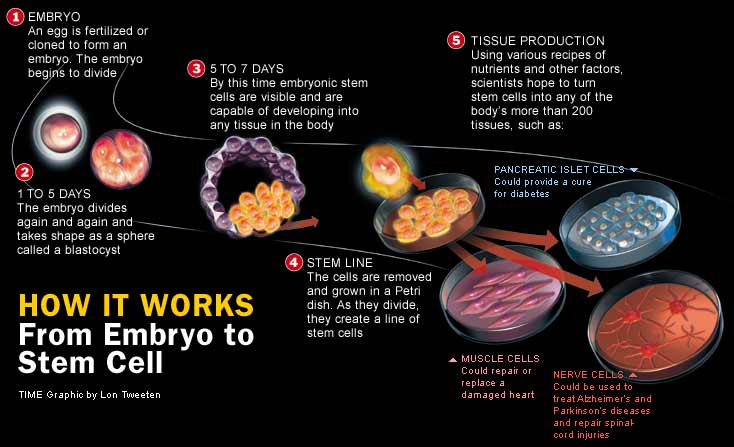
 There are many degenerative diseases like kidney failure, heart disease, diabetes, stroke, Parkinson’s cure are now can be cured by stem cell therapy. The good news for ladies is that amazing therapy can be a new hope for skin problems often expereinced by women such as acne, and aging. The therapy is done by two options of therapeutic procedures; firstly is injection and secondly is topical. The main point of this therapy is deriving stem cells from humans to be processed in the laboratory and then entering the cells into the patient’s body. The process is called implantation and the process will be carried out if the results of the processing of stem cells in the laboratory has developed succesfully (progenitor cell) or differentiating process into cells reached. Then, the stem cells those are implanted in the patient’s body will grow and connect with the body’s cells for performing body repair and regeneration of cells. Only by bioengineering, this therapy can alter other body cells; broken bones and crushed skin will become normal again as the results of cell’s reparation.
There are many degenerative diseases like kidney failure, heart disease, diabetes, stroke, Parkinson’s cure are now can be cured by stem cell therapy. The good news for ladies is that amazing therapy can be a new hope for skin problems often expereinced by women such as acne, and aging. The therapy is done by two options of therapeutic procedures; firstly is injection and secondly is topical. The main point of this therapy is deriving stem cells from humans to be processed in the laboratory and then entering the cells into the patient’s body. The process is called implantation and the process will be carried out if the results of the processing of stem cells in the laboratory has developed succesfully (progenitor cell) or differentiating process into cells reached. Then, the stem cells those are implanted in the patient’s body will grow and connect with the body’s cells for performing body repair and regeneration of cells. Only by bioengineering, this therapy can alter other body cells; broken bones and crushed skin will become normal again as the results of cell’s reparation.
Therapy is usually carried out by gaining stem cells from human body. Two popular sources are cord blood and umbilical cord. According to the majority of doctors, stem cells those are derived from baby have the best quality. The doctors also use a source of stem cells from the placenta. In addition to the placenta, the source of human stem cells came from fat, hair, skin, arteries, veins, and others. Human stem cells have thousand times the power of antibiotic and anti-inflammatory. There are no side effects because they are not drug and not synthetic chemicals and to obtain optimal benefits of stem cell therapy, the quality of stem cells is needed to be considered. Type of stem cells from the umbilical cord can only last 36 hours, while the stem cells derived from Wharton’s jelly of the umbilical cord can last 48 hours. That’s why the Wharton’s jelly is the first choice of most operation.
The duration of therapy is depending on illness. In patients who have problems on hair growth, within four months after treatment, the hair on the head will begin to grow heavy. Most doctors use injections and topical procedures to address this issue. Meanwhile, to cope with acne, this therapy is carried out for one month and will be done topically. For certain diseases, stem cell therapy may take longer due to patients of kidney failure patient need a long time for this therapy; up to about 18 times injection. Some other diseases that could potentially improve with stem cell therapy is autism, lupus, epilepsy, blood disorders (hematopatology), autoimmune, multiple sclerosis, Alzheimer’s, and a number of other diseases. Broadly speaking, stem cell therapy is done through three processes. The first is the provision of stem cells. The second is storage, as well as the third is the application in the clinic. A source of stem cells can be derived from the patient to be treated or from others. There is a need of careful filtering so that donors do not transmit the disease to which receive stem cells. In addition, the stem cells should not have a genetic disorder that in the long term would manifest as disease. Storage process in addition to the risk of contaminated microorganisms (bacteria, viruses, parasites), also must guarantee the stem cells live and grow well. Therefore, laboratories used for taking and storing stem cells must be a well-recognized laboratory. What we should do is choosing the reputable clinic or hospital with international standard that has been agreed by medical association. Don’t be stuck at unwanted situation for choosing unproper clinics.







